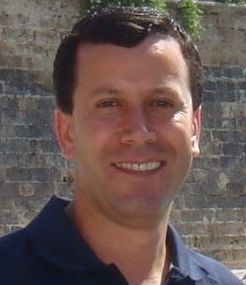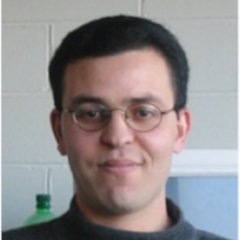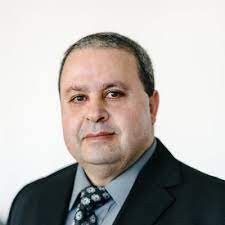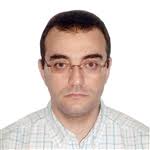

Abdessamad Ben Hamza is Professor and Director of the Concordia Institute for Information Systems Engineering at Concordia University, Montreal, Canada. He received his Ph.D. degree in Electrical and Computer Engineering from North Carolina State University, USA.

Mourad Oussalah is a Professor in the University of Oulu, Faculty of Information Technology and Electrical Engineering, Centre for Machine Vision and Signal Analysis, where he leads the Social Mining Research Group. Prior to joining the University of Oulu, he was with the University of Birmingham, UK from 2003-2016.

Professor Ahmed LAKHSSASSI is Responsible of the LIMA laboratory CANADA, received the B.Ing. and M.Sc.A in electrical engineering from Université du Québec (UQTR), Québec, Canada in 1988 and 1990 respectively. He also received the Ph.D. in Energy and Material sciences in 1995 from INRS-Energie et Materiaux Montréal, Québec, Canada.

Zakaria Maamar is Professor in the College of Technological Innovation at Zayed University, Dubai, United Arab Emirates. His research interests include service computing, cloud/edge computing, and lately Internet of (cognitive) Things.


Title: Service Provisioning at the Edge: Challenges and OpportunitiesAbstract: Despite the multiple benefits of cloud computing like pay-per-use and instant scaling-up and down, many ICT practitioners question its appropriateness for applications that expose strict latency and security non-functional requirements. Transferring data to (usually distant) clouds could take time because of high latency, could be subject to interceptions, alterations, and misuses when transferred over public communication channels, and would depend on network availability and reliability. To satisfy these non-functional requirements, the trend is to couple cloud computing with edge (some refer to it as fog) computing. This latter aims at provisioning computation, communication, and/or storage services ``next'' (or nearby) to where data is collected minimizing its transfer time and avoiding its long exposure to unnecessary risks. This keynote discusses what challenges to tackle and what opportunities to tap into when edge becomes an alternative to cloud. Biography: Zakaria Maamar is Professor in the College of Technological Innovation at Zayed University, Dubai, United Arab Emirates. His research interests include service computing, cloud/edge computing, and lately Internet of (cognitive) Things. Zakaria has published in different peer reviewed journals and conferences, serves on the program and organizing committees of several international conferences and workshops, and also serves on the editorial boards of international journals. He is the recipient of an IBM Faculty Award in 2009. Zakaria has a PhD in computer science from Laval University, Quebec City, Canada |
|
Keynote Title: Deep learning with autoencoders and generative modelsAbstract: This lecture introduces autoencoders and deep generative models for computer vision. It begins by explaining what autoencoders and generative models are. Then, it describes the different elements that make up an autoencoder including an encoder network and a decoder network, as well as a generative model including a generator network and a discriminator network. It also explains the difference between discriminative and generative models. Finally, it covers the implementation and different applications of autoencoders and generative adversarial networks in downstream learning tasks such as image classification, 3D shape retrieval, interactive image generation, medical imaging, virtual try-on, and video prediction. Biography: Abdessamad Ben Hamza is Professor and Director of the Concordia Institute for Information Systems Engineering at Concordia University, Montreal, Canada. He received his Ph.D. degree in Electrical and Computer Engineering from North Carolina State University, USA. Prior to joining Concordia, he was a postdoctoral research associate at Duke University in North Carolina, affiliated with both the Department of Electrical and Computer Engineering and the Fitzpatrick Center for Photonics and Communications Systems. He is the coauthor of the book "Geometric Methods in Signal and Image Analysis" (Cambridge University Press, 2015). He received the IEEE Transactions on Multimedia Outstanding Reviewer Award 2021. His research interests include machine learning, computer vision, image processing, graph signal processing, and medical imaging. He is a licensed professional engineer and a senior member of IEEE. |
|
Keynote Title: A Bridge between Computer Vision and Natural Language Processing: Automatic Image CaptioningAbstract: With the boost in user generated content due to emergence of social media platforms and development of open dataset in various fields where images are interlinked with their associated textual description, a new field of research that intertwines image processing and natural language processing arose. This is exemplified in applications like visual question-answering, text-to-image generation, semantic tagging, image content interpretation, human-robot interaction, medical image captioning, among others. In the above examples, there is a need to find timely and relevant meaning for the image content in a way to trigger actionable notification to relevant end-users. This keynote reviews the state-of-the-art in automatic image captioning systems with a focus on medical imaging systems. Then it draws on our recent advances using ImageCLEF data challenge where new deep learning architectures are put forward. Besides, an explainable approach that provides a sound interpretation of the attention-based encoder-decoder model for image captioning is achieved. This provides a visual link between the region of medical image and the corresponding wording in the generated sentence. For this purpose, self-attention mechanism is employed to compute word importance for the semantic features and attention mechanism is used to compute most relevant regions of the image considered by the model to generate the caption sequences. Performances of the model are assessed using ImageCLEF medical captioning dataset. Biography: Dr. Mourad Oussalah is a Research Professor in University of Oulu, Faculty of Information Technology and Electrical Engineering, Centre for Machine Vision and Signal Analysis, where he leads the Social Mining Research Group. He is also affiliated with Medical Imaging, Physics and Technology Unit of the Faculty of Medicine as part of Academy of Finland DigiHealth Project. Prior joining University of Oulu, he was with the University of Birmingham, UK from 2003-2016. He also held research positions at City University of London and KU Leuven in Belgium, and Visiting Professor position in University of Evry Val Essonnes of France (summer 2006), New Mexico of USA (summer 2009) and Xian University of China (Fall 2018). Dr. Oussalah research has concentrated mainly on information and data fusion, text mining, information retrieval and uncertainty handling where he published more than 250 international publications and supervised a dozen of PhD students and more than 40 Msc students, provided more than 20 keynote talks at international conferences and served as PC members of more than 60 international conferences. He is a Fellow of Royal Statistical Society and Senior member of IEEE and acted as executive of IEEE SMC UK & Ireland Chapter from 2002 till 2016. Dr. Oussalah is also leading and participating into several EU and national research council projects projects in the area of social media analytics, environment research, smart city, security and societal challenges, digital health. He also secured funding from several foundations (e.g., Finnish Cancer Research, Nokia and Nuffield foundations). |
|
Keynote Title: Improving human health: Challenges and Methodology for controlling thermal doses during Cancer therapeutic treatment.Abstract: Controlled thermal ablation in order to maximize the therapy and minimize the side effects poses a challenge during the heating of the biological tissue. T raditionally, these processes are modelled by the bio heat equation introduced by Pennes, who used the Fourier’s theory of heat conduction. During my talk I will present our automated thermal dose control and prediction system for cancer tumors therapy by using Implantable Bio-chip solution. The proposed system is able to control thermal ablation doses deposition during a laser surgery/cancer treatment. A system would help physicians to predict thermal diffusion to organize the treatment as well as maximize therapeutic effects while minimizing side effects. A case study of the Laser Interstitial Thermal Therapy (LITT) will demonstrate his feasibility as Cancer therapeutic treatment. Furthermore, our Dosimetry Framework of the Bio-heat Transfer for Laser/Cancer Treatment will be introduced. This would provide a precise idea of the predicted reaction depending on selected doses, tissue geometry, and the laser source prior to the treatment; so new treatment strategies can be proposed and evaluated. Biography: Professor Ahmed LAKHSSASSI is Responsible of the LIMA laboratory CANADA, received the B.Ing. and M.Sc.A in electrical engineering from Université du Québec (UQTR), Québec, Canada in 1988 and 1990 respectively. He also received the Ph.D. in Energy and Material sciences in 1995 from INRS-Energie et Materiaux Montréal, Québec, Canada. A year also, he had become a professor of Electro-thermo-mechanical aspects at NSERC -Hydro-Quebec Industrial Research Chair at Electrical Engineering Department of the UQTR. Since 1998, he has been with UQO (Université du Québec en Outaouais), where he is currently titular professor and responsible of the LIMA laboratory (Advanced Microsystem Engineering Laboratory) developing algorithms for Microsystems thermo-mechanical monitoring and associated distributed sensors network. His research interest is the fields of automatic IP porting tools between different technology nodes and LAIC systems thermo-mechanical prediction unit and monitoring methods to sustain transient thermo-mechanical stress peaks reliability. |